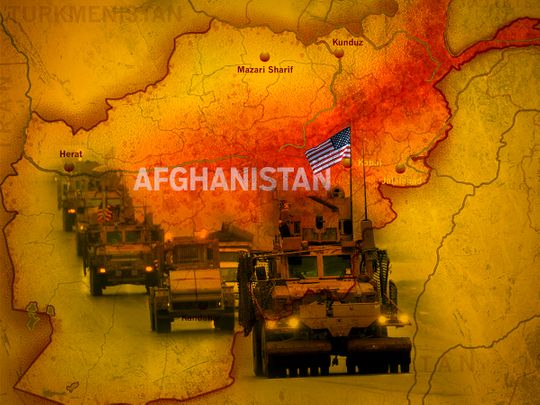The United Nations in a new report is warning that the threat from terror groups such as Daesh and al Qaeda is expanding in many places in Afghanistan where the security situation remains fragile with uncertainty surrounding the peace process and a risk of further deterioration.
The report by the UN Security Council, published Thursday, says that despite territorial, leadership, manpower and financial losses during 2020 in Kunar and Nangarhar provinces, Daesh’s Khorasan branch, or ISIL-K, has moved into other provinces, including Nuristan, Badghis, Sar-e-Pul, Baghlan, Badakhshan, Kunduz and Kabul, where fighters have formed sleeper cells.
The report says that the group has strengthened its positions in and around Kabul, where it conducts most of its attacks, targeting minorities, activists, government employees and personnel of the Afghan National Defense and Security Forces.
The report says that most recently, Daesh claimed responsibility for the brutal attack of 8 June, when 10 humanitarian deminers working with HALO Trust in Baghlan Province were killed and 16 were injured.
“In its efforts to resurge, ISIL-K has prioritized the recruitment and training of new supporters; its leaders also hope to attract intransigent Taliban and other militants who reject the Agreement for Bringing Peace to Afghanistan between the United States and the Taliban and to recruit fighters from the Syrian Arab Republic, Iraq and other conflict zones,” the report says.
The report states that the estimates of the strength of Daesh’s Khorasan branch range widely, with one member state reporting between 500 and 1,500 fighters and another stating that it may rise to as many as 10,000 over the medium term.
“One member state stressed that ISIL-K was largely underground and clandestine,” the report says. “Its leader, Shahab al-Muhajir, alias Sanaullah, cooperates with Sheikh Tamim, head of the al-Sadiq office.”
The report says that Tamim and his office are tasked by Daesh core to oversee the network connecting the Khorasan branch with Daesh presences in the wider region.
The UN report says that as reported by the UN Monitoring Team in its twelfth report to the Security Council Committee established pursuant to resolution 1988 (2011), al Qaeda is present in at least 15 Afghan provinces, primarily in the eastern, southern and south-eastern regions.
The report says that al Qaeda’s weekly Thabat newsletter reports on its operations inside Afghanistan.
Al Qaeda in the Indian Subcontinent (AQIS) operates under Taliban protection from Kandahar, Helmand and Nimroz provinces, the report says.
Since the death of Asim Umar in 2019, AQIS has been led by Osama Mahmood, the report says, adding that the group consists mainly of Afghan and Pakistani nationals, but also individuals from Bangladesh, India and Myanmar.
On 30 March, AQIS commander Dawlat Bek Tajiki (alias Abu Mohammad al-Tajiki) was killed by Afghan forces in Gyan district of Paktika province.
“Al Qaeda leader Ayman al-Zawahiri is assessed by member states to be alive but ailing in Afghanistan. SayfAl Adl, his most likely successor, is reported to remain in the Islamic Republic of Iran,” the report states.
Member states differ as to what Al Adl’s options would be if he was called upon to succeed al-Zawahiri, but most assess that he would have to move and that basing himself in Afghanistan might not be an option, the report says.
The leadership succession calculations of Al Qaeda are complicated by the peace process in Afghanistan where, under the Doha agreement of February 2020, the Taliban is committed to suppressing any international terrorist threat, the report says, but adds that it is unclear whether Sayf-Al Adl would be able to travel to Afghanistan to take up the position of leader of Al Qaeda.
The report mentions that some member states point to his history of living and operating in Africa and assess that he might choose to base himself there.
The report also says that the Islamic Movement of Uzbekistan, IMU, faces financial difficulties and a Taliban that is less accommodating than it used to be.













